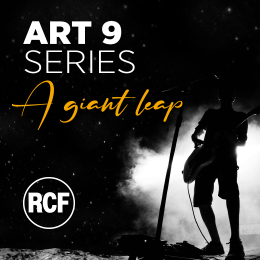Subscribe to CX E-News
         |
For those that have only worked in and experienced the entertainment industry of the last ten years, some of the most import people in the history of our industry may be unknown to you. Reg Batram, Dennis Irving, Jack Singe, Roger Barrett are big names from an era of technical production that is still recent history. Some are quietly retired, some have past on and some are still working today after many, many years.
John Grimshaw recently had the opportunity to sit down with Jack Singe in his home in Brisbane as he remembered back over nearly 70 years devoted to theatre, film and television in Australia. Jack has certainly seen better days, with illness and age finally catching up. Infirmity does not sit well with Jack, who was always an active person, both in mind and in work. Despite the obvious effort it takes to recount his history, the passion for the industry still twinkles in is his eyes as he related stories of times, theatres, people and war.
In a life that spans working for innumerable theatrical productions, working through World War II as a technician for military entertainment units, setting up ABC television and more recently around 20 years trying to prevent architects from making the mistakes they seem to love to make as they design venues, Jack has certainly been busy. He is also one of those very rare breed – an elder technician.
1936, Sydney. A teenage Jack finds work with J.C. Williamsons. At the time, J.C Williamsons is the most important and certainly the largest of the theatrical companies in Australia. They own theatres and equipment, they produced and staged shows, and if you wanted to get into the industry, that was were you needed to be. This work then lead to a couple of years working on touring tent shows. In very few years, Jack had began to pick up many of the skills of the senior techs. But all of this was put on hold when World War II interrupted everything.
With his age, he was conscripted soon enough, but his talents saw him enter the infantry corps working in the newly formed entertainment divisions. His experience in technical production had him working as a part of the biggest and most complex “production” companies the country has seen.
At the time, the war effort was spread over vast distances. Initially stretching from Africa and through Europe, the war soon also engulfed Asia as Japan made moves to spread out. As Jack started work in the army, the entertainment units were all state based and uncoordinated with each other. However, given the initial experience of operating concert events for the troops in the middle-east, the military centralised the operation and created the biggest production company this country has ever seen – even to now.
Jim Davidson and his dance band – all from ABC radio, were seconded into the army, with Jim given the task of creating and managing the soon to be formed 22 “Concert Parties”. The Pagewood Film Studios in Maroobra, Sydney were taken over to become the Headquarters of the entertainment unit, where all of the new staff were trained. Each Concert party needed stages, props, costumes, power, lights, audio, musicians, performers and so on – all set up to tour. These were pulled together at the studios, and each Party was dispatched across the country and around parts of nearby Asia to entertain the troops. Building this unit up was no small task, as it involved hundreds of people, many tons of equipment, and huge resources to keep it all operational. Jack employed the skilled he learned in the touring tents shows to help prepare these touring live shows, replicating the design of these touring stages.
The military had the power to ‘appropriate’ any equipment or people it needed to serve the war effort. So it was that Jim Collins, the General Manager of Greater Union cinemas, suddenly found himself a Major. He was tasked with the job of creating mobile cinema units to entertain the troops. The fleet of Nestle delivery vans that used to deliver chocolate around Sydney and many other similar vehicles were converted into mobile 35mm cinema projection booths – with the projectors coming from cinemas that the war office would choose. A cinema would get a letter sent to the management, telling them of the appropriation, and the projectionist would get a similar letter telling him to report for duty. More than 170 of these cinema units were able to deliver more than 400 performances a week to troops stationed around Australia and into the pacific.
“These units were a vital part of the action to keep up morale and were stationed in some remote parts of Australia were boredom was a problem, and in forward positions where bombing and strafing were an every day event.”
Jack found himself working both in the workshops preparing the live and cinema tours, as well as out on the road running the shows. The performing troupes were sent out all over the country from Sydney. The tours would return home, rest up, and then go out again. Though a number of these tours were relatively short, Jack was sent out for an extended tour of duty. Two concert parties and a five of cinema units were sent to New Guinea. Jack was deployed to Milne Bay in Papua New Guinea, around two weeks after the Japanese were pushed out of the area. For fourteen months, the cinema would show movies and news reels to the troops, to as many as 17,000 troops at a time.
The audience would sit on both sides of the screen – which was little more than a glorified sheet of material, half of the audience watching the mirror image of the film on the back of the cloth. One of Jack’s jobs was to kill the generator (shown on the left of the picture) if an air attack was starting. With the cinema the only light allowed to operate after dark, they needed to be very careful it did not become an easy target. Jack’s helmet hung on the ignition switch for the generator so he could kill the power at the same time as donning the protection.
For the live concerts for the troops, the descriptions given by Jack hark back to that old BBC television series “It Ain’t Half Hot Mum”. Men dressed as women, special guest performers from the main land, hard work, heat, rain, bogging trucks, and so on. The equipment was certainly spartan – four outdoor style PA horns for audio and a simple 100W amp, a mobile stage that was set up and moved and set up again. Despite this, the group of men that filled the entertainment unit were able to stage up to 500 performances per week across Australia and Papua New Guinea. These performances included many of the top performers at the time – George Wallace Jr, Smokey Dawson, Michael Pate, Gladys Moncreif, and so on.
It was dangerous and hard work, but it was not to last forever. Jack saw the war to its conclusion, finally handing over his equipment to the official Army disposal unit, and then leaving to find work in the fledgling Australian movie industry.
Jack’s thoughts about his time in the military were rekindled not too long ago when Connections ran an article on the entertainment sent to the troops stationed in East Timor. He sent the magazine a letter describing the memories this brought back…
Letter from Jack Singe, published in Connections Magazine April 2000:
I found the story “Tour of Duty” in the February edition of Connections very interesting and took me back nearly sixty years to my time in the Army Entertainment Unit.
In 1942 when the government formed the Army Entertainment Unit it enlisted some of the top bands and entertainers in the country and formed twenty-two Concert Parties. Plus another twenty personnel as back up to cover sickness, emergencies etc.
Army life and discipline was a shock for these people but they coped extremely well. Within months of joining they were dispatched far and wide in the war zone, Northern Australia, New Guinea, Pacific Islands, complete with mobile stages, generators stage lighting, stage settings (drapes, rostra etc) wardrobe and sound systems. The headquarters and base for the Unit was the Pagewood Film Studios in Sydney.
The average age for members of the Entertainment Unit was 15 years above that of the ordinary troops who were mostly around the 18 or 19 mark. Whilst on active service, each Concert Party was expected to move, set up and perform some 4-5 shows per week. A total of some eighty shows per week was the norm for the Unit. We also provided the facilities to back up American performers who toured from time to time – but always in safe areas.
Each Concert Party was self-contained. Twenty-two musicians or entertainers and one technician. Every member was multi skilled – driving trucks, assemble stage and equipment, wardrobe maintenance, administration, mess, first aid etc.
Staging shows in New Guinea had its interesting side. On clear nights you could always expect one, two or more bombing raids – the stage lights plus the large concentration of troops in one place was a prime target.
At other times of the year, it rained for almost three months, creating problems for vehicles and men alike, sinking knee deep in mud. But the shows always went on. From a technical aspect I think the biggest difference between the past and the present is in the audio arena.
Our equipment was quite primitive by today’s standards. We had to rely on 6ft metal hornspeakers (as installed at some racetracks) to cover the estimated 2-4 thousand troops who turned up for our concerts. Each Concert Party had six horns and with prior notice could call on another four, plus six ribbon Microphones. These were the only microphones available at the time that would stand up to the humid conditions and the occasional drenching. I could write a book on my 4 years with Army Entertainment.
Thank you once again for the item on the DILI Concert – it brought back many memories.
– Jack Singe, Kenmore,
On the back of his work and experience during the war, Jack was asked to Production Manage two major feature films that were to be made by Charles Chauval – Sons Of Matthew and Jedda (the first Aussie film shot in colour). Both of these shoots were to be predominantly outdoors, and required significant logistical problems for Jack. On the Sons Of Matthew shoot, a large natural formation in the Gold Coast hinterland called the “Natural Arch” was going to become part of one of the central pivotal moments in the movie – a water rescue during a storm. The natural arch is not accessible by road. In fact, the Natural Arch is located at the foot of a mountain, and the only access was by a jerry-rigged flying fox that Jack organised. Into the valley went tons of equipment – cameras, lights, generators, wind machines, fire pump on loan from a local brigade, staff, and so on.
The picture shown here is on the set of Sons of Matthew. Have a close look at the device on the right of the picture. This is the engine of a Gypsy Moth airplane, mounted into a metal frame and anchored to the ground by chains and rocks. You can clearly see the prop – with no guard. OH&S had not been invented back then!
For the movie, they even dammed up the creek to flood the area. The water level was raised up from about 60cm deep to about 2.2m. It is doubtful that the current National Parks personnel would let this happen today. This was the way things were done back then. Problems had to be solved on the spot, and so long as you took a little care along the way with how it was done, then no one would be hurt. This was Jack – troubleshooter extraordinaire.
The war and film experience brought him to the roles of Production Manager and Technical Manager for a number of the major production companies, including the Tivoli Circuit, Celebrity Theatres, J. C. Williamson Theatres, National Opera, and the Italian Opera Company.
Jack had worked in almost every major performing venue in the country, and so was known by every important production person at the time. It should have come as no surprise when he was recommended by a number of people to head up the creation and running of the studios when the ABC decided to dabble in that strangle medium – television.
Head hunted by the ABC’s General Manager (T. S. Duckmanton), early in 1956 Jack was appointed Supervisor of Production Facilities for ABC Television Services Sydney. This role meant that Jack needed to find and supervise more then 300 staff, both temporary and permanent, to fill the responsibilities of production. Jack oversaw all production planning, and organised design, graphics, staging, props, special effects, wardrobe, makeup, lighting, sound and film operations. With little or no existing skill base to draw on staff, Jack had to devise training and implement for his new crew.
Other than the designs for the BBC studios in London, they had no other clues for how to set up the studios, so Jack simply put it all together. When the first broadcast finally ran on November 5 in 1956, Jack was the Production Manager for the show.
From day one, television ran with a full suite of programs to fill the day. Drama, Opera, News, Current Affairs, Children’s Education, Kindergarten, Ballet, Light Entertainment, Gardening and so on. To manage this, the Gore Hill studio swung immediately in to 24hr, 7 day a week production. The second studio in French’s Forest ran two shifts a day, 6 days a week. With these shows only running during the day, set was removed in the late evening, studio cleaned up and new sets through the early morning so that the next day’s shows could start up with the morning broadcasts. The work was an endless procession of preparation for the coming shows.
From 1956 to 1963, Jack continued working for the ABC in Sydney – as well as running his company Theatrical Service Company from 1948 to 1963.
In 1963, Jack appointed himself to oversee the setup two ABC studios in Queensland – Rockhampton, Townsville and then the Darwin studio. At the time, there were no landline links between the stations, so each had to be able to produce its own shows, as well as running tapes that arrived from Brisbane and other studios. These regional studios were, in effect, smaller versions of the Sydney operation. During this time, Jack also travelled regularly to the other studios around the country, and was called upon on number of occasions to act as the Federal Director of Production Facilities.
By 1981, Jack had decided that it was time to move on from the ABC. His work concentrated on his theatre consultancy work, giving advice to people building new venues and altering existing ones. There were at least 80 major projects during this period of Jack’s life – a period that some people these days would call the retirement years.
Jack has been an energetic contributor to our industry. In the same living room where this writer interviewed Jack, Brisbane’s Warana arts festival was coordinated and organised for the first eight years of its life. Jack was the festival’s Chief Marshall for 20 years.
Today, Jack is not his best. Weak from the exertions of the interview, he closes his eyes, but I can see that he is pleased to have finally been able to tell at least part of his story. The family tell me that he has not been this animated and happy in many weeks, and I am grateful that I can give at least this much to a man that helped shape our industry.
In these days, there were many touring tent shows, but the better known ones were Sorlies, Barton Follies, Coles Varieties, Stanely McKay Gaeties and the Lennon Review Company.
Sorlies was certainly the largest company with a four “king pole” tent that could seat approximately 1000 people. They would stay in town for 2 to 3 week seasons, with four changes of programme in that time. Barton Follies ran the same kind of show, but only had a two “king pole” tent that could seat approximately 800, while the other groups had single king pole tents for 600 people.
The companies would typically travel by train, and use local cartage contractors to move the equipment from the rail head to the performance site. Sometimes, trucks were used between towns if the distance was not that great, but with the quality of roads at the time, this was not the preferred option. Stage construction would be very basic, using simple trestles and platforms. The overall effect was an operation that was quite inefficient and very costly.
By the late 1930’s, Bert Lennon was staging shows in Her Majesty’s Theatre in Adelaide. He decided to take his production on the road using a new technique in Tent Productions.
Whilst overseas, he had observed touring tent shows built around motor vehicles which made the companies very mobile and cost effective. Bert imported from America three buses and trailers, plus a semi-trailer built as a portable stage, complete with curtains, lights, etc. It was one of the first semi-trailers seen in Australia.
Of particular note is the specially designed tent. The roof over the semi-trailer stage is higher then traditional tent designs, with four “quarter” poles at each corner of the stage area. The floating grid was assembled on the stage floor, and then hauled up using four block and tackle units – one on each of the four “quarter” poles. This allowed the grid to move with the tent roof in windy conditions.
While this design appeared to be very similar to the other tent tours, the ability to use the semi-trailer as a staging platform made the whole setup much faster and easier. The entire production could be erected in six hours, more than halving the existing time. Dismantling took only 3hrs.
Most companies staged shows which could best be described as “Musical Revue”. The level of sophistication varied from company to company – some were lavish, some were routine.
When I toured with Lennons, it was one of the smaller companies, however because of its mobility it was able to visit many smaller towns that the larger companies typically omitted. Also, because of the faster ‘turn around’ we were able to average five performances per week on tour.
The larger productions had twelve girls in the ballet, plus what ever the current ‘top’ live variety acts were at the time. The variety acts typically came from the Tivoli Circuit. There were eight musicians in the orchestra.
Australia’s Technical History in the Entertainment Industry
John Grimshaw is researching material for his Masters to be focused on methods for industry training. This article was written after an interview with Jack Singe to get background material on how technicians worked on the past – the sorts of jobs they had to do, the skills they needed, what the industry was like. John would be interested to hear from any others out there that have things to say about the training and working in the industry – its history, its future. You can contact John directly at johng@cxnetwork.com.au, or by mailing Juliusmedia, Locked Bag 30, Epping NSW 1710.
Subscribe
Published monthly since 1991, our famous AV industry magazine is free for download or pay for print. Subscribers also receive CX News, our free weekly email with the latest industry news and jobs.











